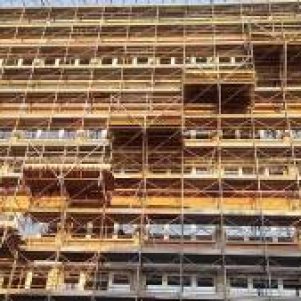Unlike creditors’ voluntary liquidation proceedings which are commenced by the debtor, creditors’ compulsory liquidation proceedings in Spain are those which are requested by a legitimate creditor under Article 3.1 of the Law 22/2003 (the Insolvency Act).
The Insolvency Act defines insolvency as when the debtor is unable to regularly comply with his obligations when they become due and payable (liquidity test).
For an application for compulsory liquidation to be filed by a creditor, the creditor must not ground his action on a debt which has fallen due and payable within six months before the filing of the application (Article 3.2 Insolvency Act).
Creditors’ compulsory liquidation may also be requested by the shareholders or board members of the legal entity who are personally liable for the debts (Article 3.3 Insolvency Act).
A creditors’ compulsory liquidation proceeding shall be based on a claim for which enforcement or collection proceedings have been dispatched against the debtor without discovering sufficient free assets for payment, or when any of the following situations concurs:
- General default of the debtor’s payment obligations;
- The existence of liens for pending enforcement with an overall effect on the debtor’s estate;
- Sale of the debtor’s assets at a loss or in a negligent manner; or,
- Generalized breach of obligations of any of the following classes: tax obligations payable during the three months preceding the application for bankruptcy; social security payments and other contributions during the same period; or, wages, allowances and other benefits arising from labour relations for the previous three months.
It should be pointed out that to initiate a compulsory proceeding, the burden of proof lies with the creditor, requiring him to include in the initial application all the evidence available to him supporting his claim.
Once the request for compulsory bankruptcy has been submitted, the Judge may:
- Decide the application is complete. The Judge on that same day or, at the latest, the following day, can mandate the automatic admission of the application. The Judge may also allow, within five days, the opportunity to correct any errors found in the application.
At this point, the Judge will send a summons to the debtor, along with the application for liquidation, requesting that he appear before the judge within five days of the summons. The debtor may file an opposition, submitting it in writing within the period specified above, and may offer any evidence that he deems appropriate to support his claim.
Witness testimony is not sufficient to prove the facts alleged by the creditor.
It should be advised that, at this point, the creditor or any other person with a legitimate interest in the case may request the judge to adopt precautionary measures to secure the debtor’s assets. To this end, the Judge may require the creditor to pay a bond to the court to indemnify the debtor against any prejudice or damages these preventive measures may cause.
- Find the documentation inadequate. If the documentation or the application for the declaration of bankruptcy is incorrect and not remedied within five days, the Judge may issue a Writ of Inadmissibility. In this case, it is possible to file a Motion for reconsideration and appeal the decision.
- Find the acquiescence of the debtor. In the event of the petition being admitted, if the debtor summoned admits the petitioner’s claim, or does not file opposition within the time allowed, the Judge shall hand down an order declaring the liquidation proceedings open. Liquidation will be declared without holding a hearing or an examination of evidence attesting to the state of bankruptcy of the debtor (Article 18.1 Insolvency Act). This process then follows the same course as for a creditors´ voluntary liquidation, when an insolvent debtor files it.
- Decide on the debtor’s opposition. The debtor must submit his opposition in writing within five days of the summons and base it on the following facts:
- Lack of evidence of any of the facts on which the creditors have filed the compulsory bankruptcy ;
- If the facts are true, he is not in a state of bankruptcy. The debtor must prove his solvency and must also show his accounting books to the Court.
- Decide in case of non-appearance of the creditor or if he appears but is not able to corroborate his opposition. Should the creditor not appear or, having done so, not ratify his petition, and (i) the Judge considers there is an objective case to declare the liquidation proceedings open and (ii) when the proceedings show the existence of other possible creditors, before handing down the order to resolve the petition, the Judge shall grant these creditors a term of five days to formulate the allegations they may deem convenient.
Once the compulsory bankruptcy has been declared, the debtor’s powers of administration and regulation over his assets are suspended and transferred to the appointed Liquidators.
Likewise, should the creditor successfully file for the debtor’s insolvency, 50% of the creditor’s claim will be considered as a claim with general preference.
For additional information regarding liquidation proceedings in Spain,





